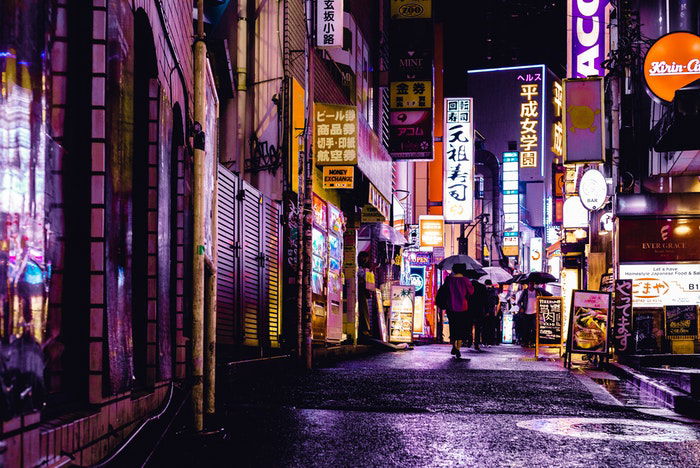What Does Street Photographers Do?
What Does Street Photographers Do?
Blog Article
6 Easy Facts About Street Photographers Described
Table of ContentsThe Ultimate Guide To Street PhotographersUnknown Facts About Street PhotographersAn Unbiased View of Street PhotographersEverything about Street PhotographersThe 4-Minute Rule for Street Photographers
A style of photography that documents day-to-day life in a public location. The actual publicness of the setup makes it possible for the digital photographer to take honest images of complete strangers, commonly without their knowledge. Road photographers do not always have a social function in mind, but they prefer to separate and capture minutes which might or else go unnoticed (Street Photographers).He was influenced by numerous of those that influenced the road photographers of the 1950s and '60s, he was not primarily interested in capturing the spirit of the street. The impulse to aesthetically document people in public started with 19th-century painters such as Edgar Degas, douard Manet, and Henri de Toulouse-Lautrec, who worked side by side with digital photographers attempting to catch the essence of city life.
As opposed to Atget, photographer Charles Marville was employed by the city of Paris to produce an encyclopaedic paper of Haussmann's city preparation task as it unravelled, hence old and brand-new Paris. While the photographers' subject was essentially the same, the results were considerably different, demonstrating the effect of the professional photographer's bent on the character of the pictures he produced.
Offered the fine quality of his photos and the breadth of material, designers and artists commonly acquired Atget's prints to utilize as recommendation for their very own job, though business passions were rarely his major inspiration. Rather, he was driven to picture every last residue of the Paris he enjoyed. The mingled interest and necessity of his goal sparkle through, causing pictures that tell his very own experience of the city, high qualities that expected road digital photography of the 20th century.
3 Easy Facts About Street Photographers Explained
They reveal the city via his eyes. His work and basic understanding of digital photography as an art form offered as inspiration to generations of photographers that adhered to. The next generation of road photographers, though they likely did not describe themselves because of this, was introduced by the photojournalism of Hungarian-born digital photographer Andr Kertsz.
Unlike his peers, Brassa made use of a larger-format Voigtlnder camera with a longer exposure time, compeling him to be much more computed and thoughtful in his method than he may have been if utilizing a Leica. (It is thought that he may not have had the ability to pay for a Leica back then, but he did, however, utilize one in the late 1950s to take colour photos.) Brassa's photographs of the Paris underworld lit up by man-made light were a revelation, and the compilation of the collection that he published, (1933 ), was a major success.
Cartier-Bresson was a champ of the Leica video camera and among the first photographers to maximize its abilities. The Leica permitted the professional photographer to communicate with the surroundings and to record moments as they occurred. Its fairly small dimension also helped the digital photographer discolor right into the history, which was Cartier-Bresson's preferred go to this website technique.
Little Known Questions About Street Photographers.
It is as a result of this basic understanding of the art of image taking that he is often credited with rediscovering the tool throughout again approximately a century because its development. He took photos for greater than a half century and influenced generations of professional photographers to trust their eye and intuition in the minute.
These are the questions I will try to respond to: And then I'll leave you with my own definition of street digital photography. Yes, we do. Let's begin with defining what a meaning is: According to (Street Photographers) it is: "The act of defining, or of making something precise, distinct, or clear"
No, absolutely not. The term is both restricting and misinforming. Seems like a street photography need to be photos of a roads best?! And all road digital photographers, with the exception of a tiny number of absolute newbies, will fully value that a road is not the crucial component to street digital photography, and really if it's a helpful site photo of a street with possibly a few monotonous people doing nothing of interest, that's not street digital photography that's a snapshot of a street.
The Definitive Guide to Street Photographers
He makes a valid factor don't you think? Nevertheless, while I concur with him I'm uncertain "honest public digital photography" will certainly capture on (although I do kind of like the term "candid photography") due to the fact that "road photography" has been around for a long period of time, with lots of masters' names affixed to it, so I believe the term is here to stay.
You can fire at the beach, at a celebration, in a street, in a park, in a piazza, in a coffee shop, at a museum or art gallery, in a metro terminal, at an occasion, on a bridge, under click this a bridge ...
Yes, I'm afraid we have no choice! Without policies we can not have an interpretation, and without a definition we don't have a category, and without a style we do not have anything to define what we do, and so we are stuck in a "guidelines meaning style" loophole!
The Single Strategy To Use For Street Photographers

Report this page